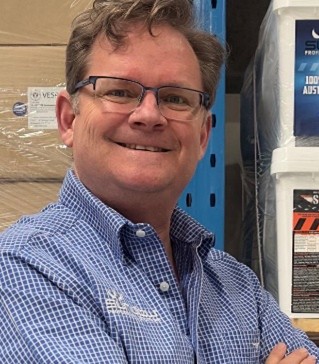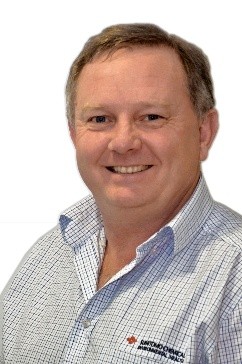ABSTRACT View more...
Introduction: Overview of possums in urban areas, their behaviour, and legal protections.
Impact and Risks: Possums’ potential to cause structural damage, noise, and issues for homeowners.
Advanced Management Strategies:
Exclusion Techniques: Best practices for roof-proofing, including materials, installation, and long-term maintenance.
Deterrents: Use of lighting, sound devices, and scent-based repellents.
Humane Relocation: Safe trapping methods and compliance with relocation regulations.
Client Education: Advising clients on garden changes to reduce possum attraction (e.g., removing fruit trees or using physical barriers).
ABSTRACT View more...
Introduction: Types of termites and their lifecycle.
Impact and Risks: Structural damage and high repair costs for property owners.
Advanced Management Strategies:
Termite Barriers: Installation of physical and chemical barriers, with a focus on long-term maintenance.
Baiting Systems: Selection, deployment, and monitoring of bait systems for colony elimination.
Chemical Treatments: In-depth on the use of termiticides (e.g., termidor), application techniques, and safety protocols.
Inspection Techniques: Training on early detection, use of thermal imaging, moisture meters, and reporting methods for effective client communication.
ABSTRACT View more...
Introduction: Common spider species and their risks.
Impact and Risks: Fear, bites, and infestations.
Advanced Management Strategies:
Insecticides: Selection of appropriate insecticides for spiders, focusing on contact and residual sprays.
Treatment strategies: Pest harbourages, Treatment protocols and habitat modification to reduce spider presence.
Treatment equipment and strategies to get the most out of the treatment
Managing Client Expectations: Educating clients on preventive measures, such as reducing clutter and web removal.
ABSTRACT View more...
Cockroaches thrive in urban environments where buildings offer abundant shelter, warmth, food, and moisture. Understanding their social and foraging behaviours is essential for effective control.
German cockroaches live in mixed-family groups, typically composed of about 60% nymphs and 40% adults. They are mainly nocturnal, foraging individually but returning to communal harbourages. Their activity peaks a few hours after dark but can adjust based on environmental cues such as light or human activity.
Research shows cockroaches do not forage randomly. Instead, they use a navigation method called Path Integration, relying on memory of odours, visual landmarks, and distances learned from previous trips to efficiently travel between food, water, and shelter. They also learn to seek specific nutrients based on their body’s needs and can associate smells with food quality.
When introduced to a new environment, cockroaches explore widely until they find a preferred food source, which they then memorize and return to via the shortest route. They emphasize smell cues for food location and visual cues when returning to shelter.
Once a food source is located, cockroaches share information locally, leading to feeding aggregations. Group feeding offers benefits such as protection from predators and support for different life stages within the group.
Foraging behaviour varies by life stage. Younger nymphs tend to stay near harbourages, while older nymphs and adults are more active and efficient foragers. Given that nymphs make up a significant portion of populations, they should be a primary target in control efforts.
Studies also show that the placement of control measures near harbourages is critical. With baits, multiple small treatment spots near these sites are more effective than fewer large ones, as dominant cockroaches may exclude others from a single food source, reducing overall bait uptake.
In summary, successful cockroach control begins by locating their harbourages and placing treatments at several key spots nearby. Using a combination of methods ensures more thorough coverage and increases the chance of eliminating the entire population.
ABSTRACT View more...
Rodent infestations continue to pose serious risks to health, safety, and infrastructure in both residential and commercial environments. This session begins with an overview of common rodent species, their behaviours, and how to identify them in the field. Attendees will then explore the significant impacts rodents can cause, including structural damage, fire hazards, and disease transmission.
The session emphasises a strategic shift from reactive treatments to proactive, source-focused control. Key topics include robust exclusion and proofing methods, client engagement to address sanitation and structural issues, and best practices for designing and monitoring effective baiting programs and trapping techniques.
Participants will leave with practical knowledge to tackle rodent issues at the source for long-term, sustainable results.
ABSTRACT View more...
This presentation will introduce the mosquito lifecycle, freshwater and saltmarsh habitats and their impact both as disease vectors and nuisance insects within the community and broader environment.
Some key species will be discussed reflecting on their historical or potential impact as vectors for disease in Australia and chemical control options will be detailed with respect to both larval and adult control.
ABSTRACT View more...
Introduction: Biology and resurgence of bed bugs in urban areas.
Impact and Risks: Psychological impact and allergic reactions.
Advanced Management Strategies:
Heat Treatments: Effective use of heat treatment machines to reach lethal temperatures in infested areas.
Chemical Treatments: Selection of residual insecticides and dusts for application in cracks and crevices.
Inspection Techniques: How to use detection tools like dogs, UV lights, and monitors to identify infestations early.
Prevention Tips for Hotels and Residential Settings: Proactive management strategies for high-risk locations.
ABSTRACT View more...
Introduction: Overview of common pest bird species and behaviours.
Impact and Risks: Health risks and structural damage.
Advanced Management Strategies:
Exclusion Methods: Use of spikes, nets, and electric tracks for long-term prevention of bird nesting.
Deterrents: Use of sound and visual deterrents such as reflective tape, bird scarers, and lasers.
Trapping and Relocation: Humane trapping techniques and the legalities of bird relocation.
Nest Removal: Safe removal of nests from structures and addressing hygiene issues caused by bird droppings.
ABSTRACT View more...
Join Charles McClintock (Sumitomo Chemical Australia) and David Priddy (Sundew Solutions) for an essential presentation on one of Australia’s most serious biosecurity threats — the Red Imported Fire Ant (Solenopsis invicta). This session will explore the history of fire ant incursions in Australia, the alarming potential consequences if they become endemic, and an up-to-date overview of the current outbreak in Southeast Queensland. Learn about the tools and strategies being used to combat this pest, including targeted baiting, chemical treatment options, and how pest control operators can play a role under current biosecurity orders. Whether you're in the field, managing compliance, or simply want to understand what’s at stake — this is a must-attend session for anyone in the pest management industry.

DAVID PRIDDY – CEO, SUNDEW SOLUTIONS
David Priddy is the C.E.O. and Founder of Sundew Solutions Pty Ltd, an Australian-owned company specialising in the research, development, and supply of innovative pest management technologies. With more than 25 years of experience in the agricultural and professional pest control sectors, David brings a unique blend of scientific insight, regulatory expertise, and commercial acumen to the business.
Before establishing Sundew Solutions in 2009, David held senior roles at Bayer CropScience, where he was involved in product development, technical support, and the strategic rollout of pest solutions across Australian and New Zealand markets. His time at Bayer provided a strong foundation in global regulatory frameworks, high-performance product innovation, and stakeholder engagement—skills that continue to underpin Sundew’s success.
Under David’s leadership, Sundew Solutions has grown into a much respected and trusted brand across Australia. The company maintains a R&D-focused business model, allowing it to rapidly develop and register APVMA-approved solutions tailored to Australia’s unique pest challenges. David’s vision, industry knowledge, and commitment to quality continue to drive Sundew’s growth and market position.

CHARLES MCCLINTOCK – MANAGER PUBLIC HEALTH & PROFESSIONAL PRODUCTS, SUMITOMO CHEMICALS AUSTRALIA
Charles has been with Sumitomo Chemical Australia for 23 years and currently holds the position of Manager Public Health and Professional Products.
Prior to joining Sumitomo Chemical Charles ran a mixed farming business in southern NSW. Charles holds a Bachelor of Agricultural Economics Degree and has held board positions with agribusinesses marketing woollen apparel into the UK and meat products into Southeast Asia.
In his current role, Charles manages various business units including Vector Control, Ant Bait, Grain Protection, Turf and Pest Control.